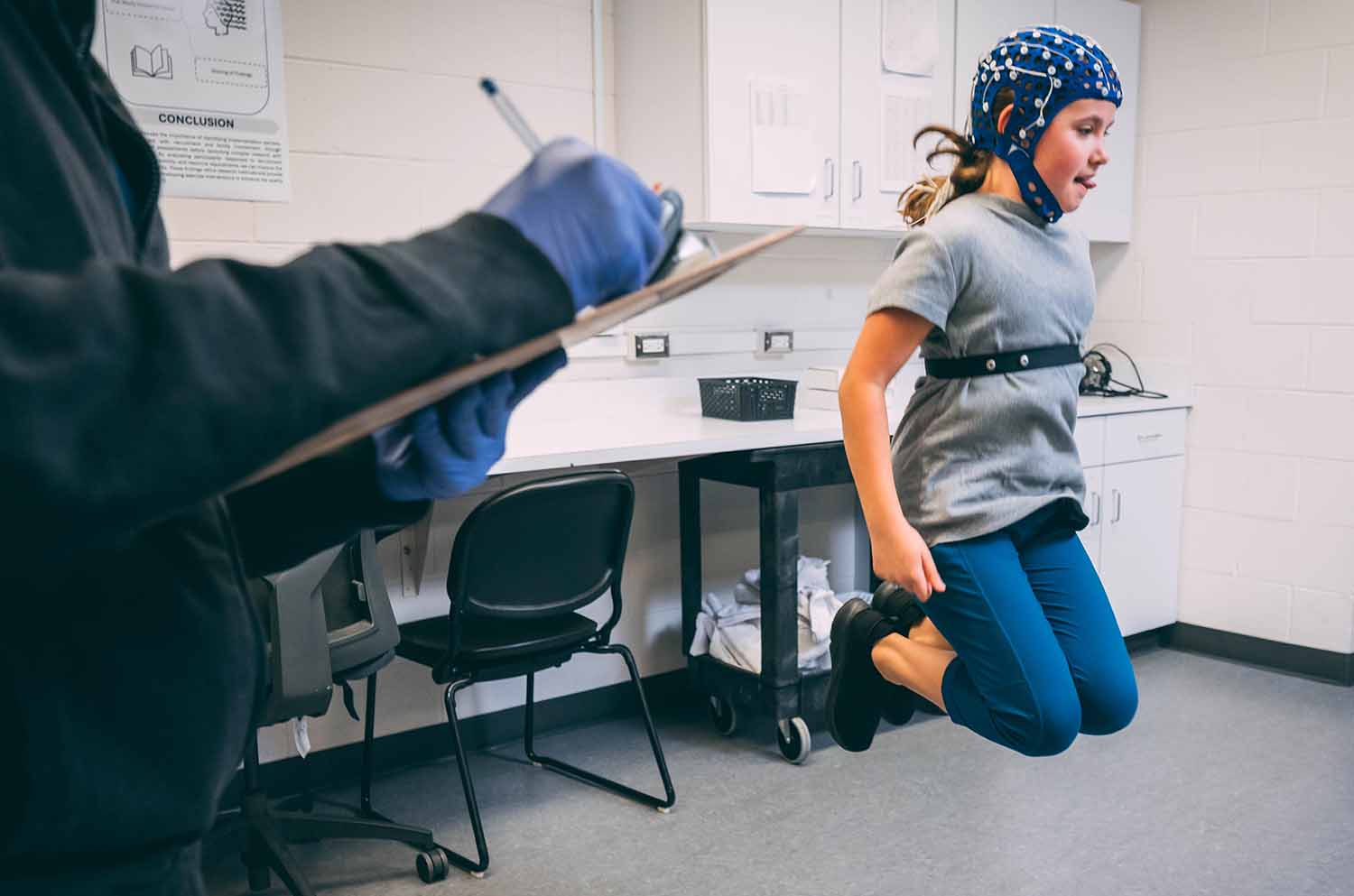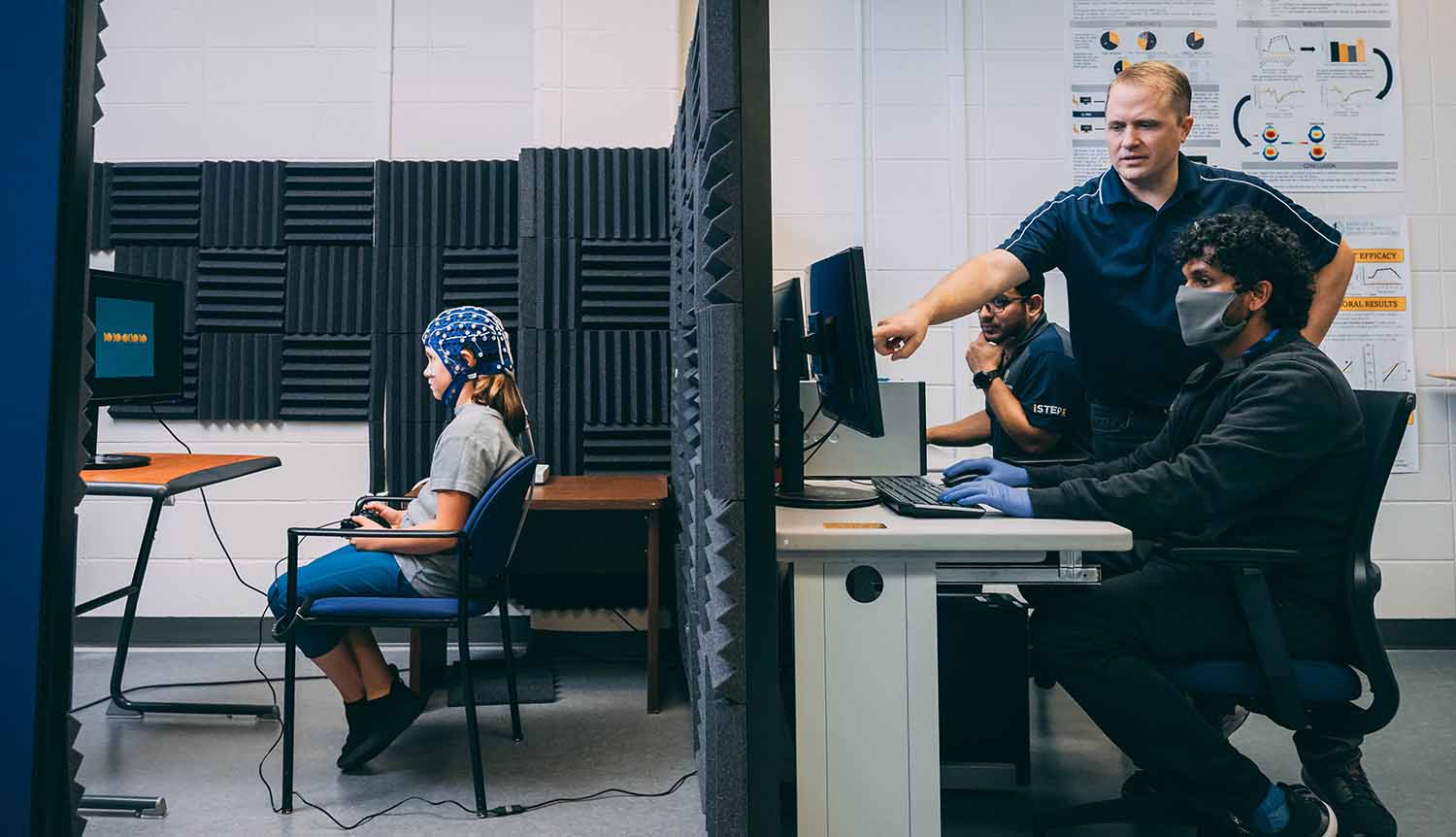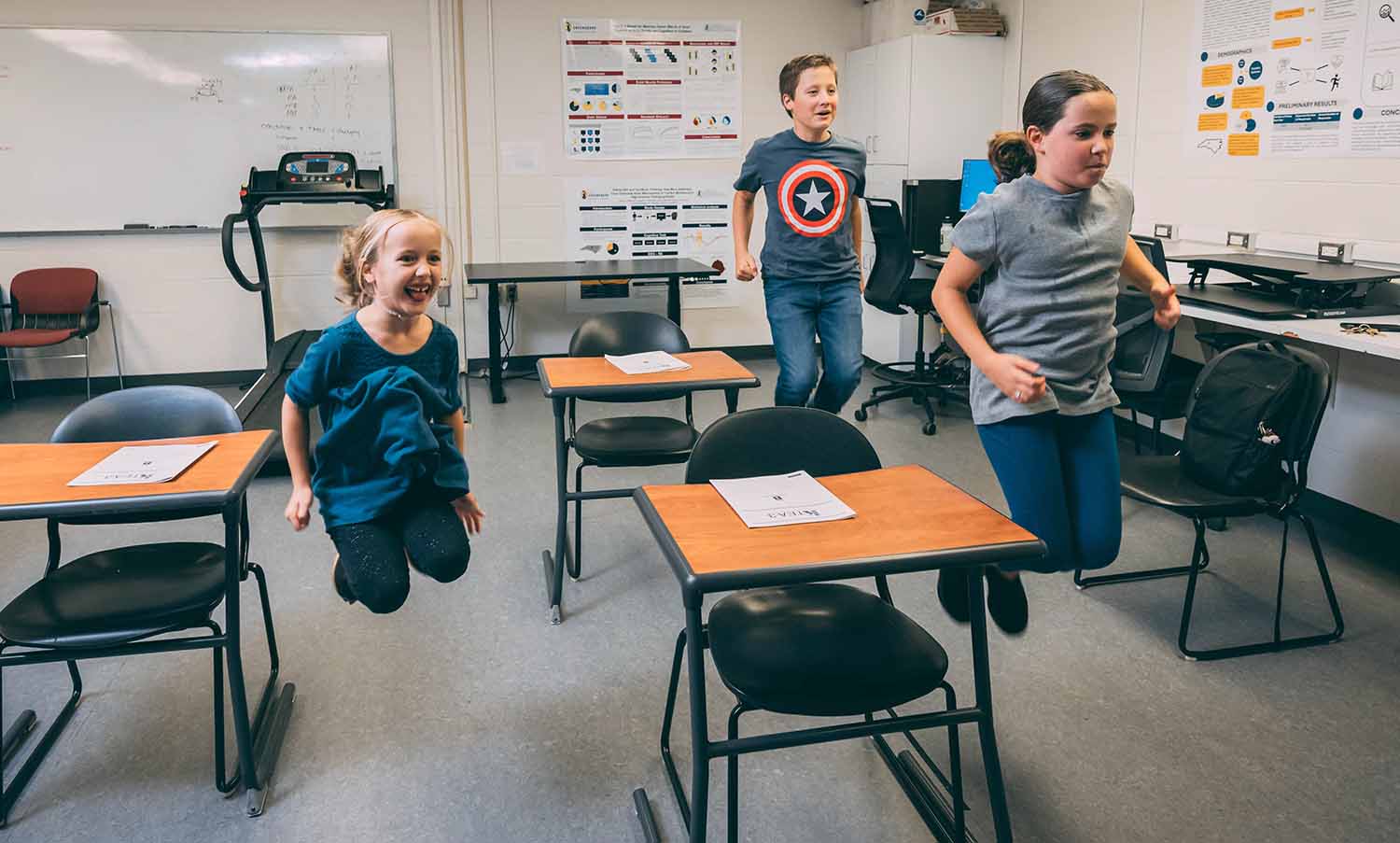Exercise Powers the Brain
In a new study, scientists found that exercise can help students focus at school.

Courtesy of © Sean Norona/University of North Carolina – Greensboro
A 10-year-old girl does an exercise while scientists monitor how the movements affect her brain.
Exercise isn’t just good for our bodies—it can also benefit our brains. In a new study, scientists found that short exercise breaks can improve students’ ability to focus at school.
The study, led by University of North Carolina (UNC) at Greensboro professor Eric Drollette, involved 25 students aged 9 to 12. Scientists asked the kids to do jumping jacks, squats, and other high-intensity exercises for 30 seconds, with a 30-second break between each exercise. (High-intensity exercises are movements that increase our heart rate and may make us sweat.) In total, the students exercised for nine minutes.

Courtesy of © Sean Norona/University of North Carolina – Greensboro
Professor Eric Drollette (standing at right) and two of his students test a girl as she does tests on a computer after exercising.
After the exercise, the scientists asked the kids to take tests on a computer. Many of these tests focused on reading or other language skills.
Scientists wanted to see if the high-intensity exercise changed the test results. To do this, they also had the kids take tests after doing easier exercise (riding an exercise bike) and after watching a video. The scientists found that the kids did best on the language tests after the high-intensity exercise.
Scientists monitored the kids’ brain activity throughout the experiment and found that the high-intensity exercise changed a type of brain response called error-related negativity (ERN). ERN occurs when we recognize that we have made a mistake. The high-intensity exercise lowered the ERN brain response. In other words, the kids recognized when they made a mistake on their tests, but they didn’t spend too long focusing on the mistake. Instead, they were able to move on in a healthy way and focus on the rest of the test.

Courtesy of © Sean Norona/University of North Carolina – Greensboro
Three children demonstrate the types of exercises that can be done in a classroom with no special equipment.
Drollette believes these results mean that high-intensity exercises may help students by improving their focus. Since students could do the exercises in the classroom, Drollette says this is a good example of how to get the benefits of exercise with no special equipment.
“Physical education and physical activity are good for our rising generation,” Drollette said in an article on the UNC website. “It’s good for mental health. It’s good for brain health and academic achievement.”






